- Published on
Citizen Science in the Maldives
- Authors

- Name
- Generosa Litton
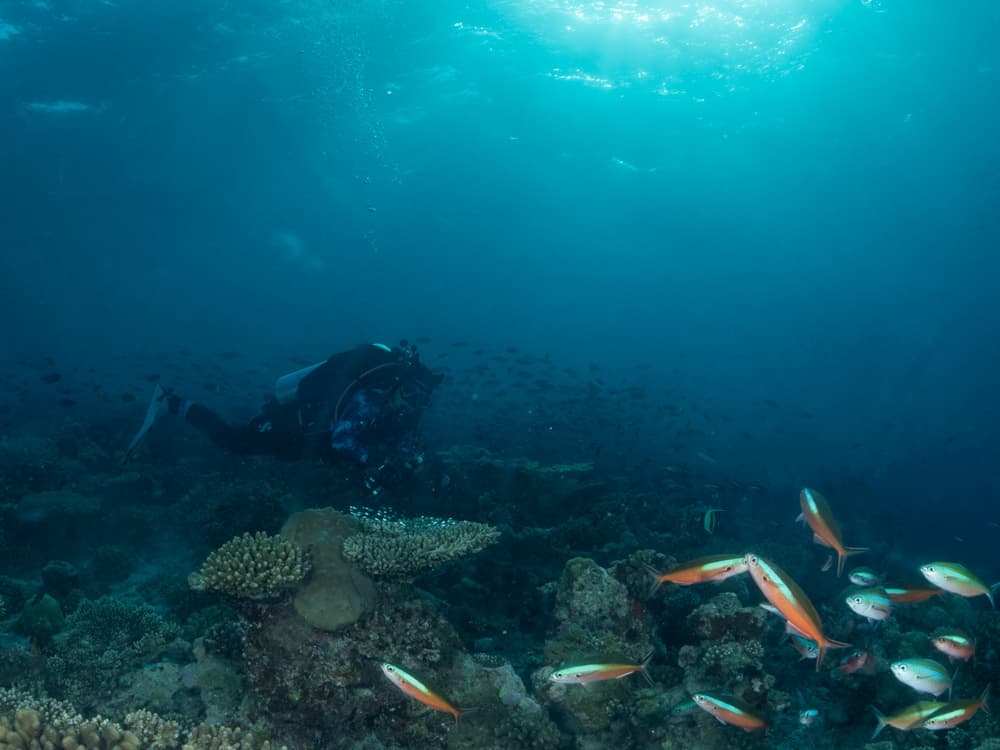 Linda surveying the reefs
Linda surveying the reefsMy scuba diving buddy Linda Elliott made me aware of a citizen science reef check survey trip to the Maldives via the organization called Biosphere Expeditions. I've done this type of reef survey in Monterey California in 2015 and I said to myself, why not? Plus, I'll be diving in the Maldives and giving back to science, how can I say no to that? 🤩
It was a seven day liveaboard trip where the three scientists taught us the Reef Check survey method which I already learned but I needed a refresher as it was 10 years ago since I did my last survey. Plus, the species we plan to survey in the Maldives are different from the ones I looked at in California. Being a photographer, I was very familiar with the critters we had to look at so I was so excited to get going! 😺
The Reef Check survey method consists of laying out a 100 meter transect where two divers, one on the left and the other on the right, look at:
- Fish
- Invertebrates
- Substrate
The divers look at these species in 20 meter increments, skip the 5 meter mark and record the data.
One of the more interesting species we had to look for in the fish category were humphead wrasse and bumphead parrotfish both of which were rare. We were lucky to spot a big Napoloean humphead wrasse off the transect which I was able to photograph right above my head!
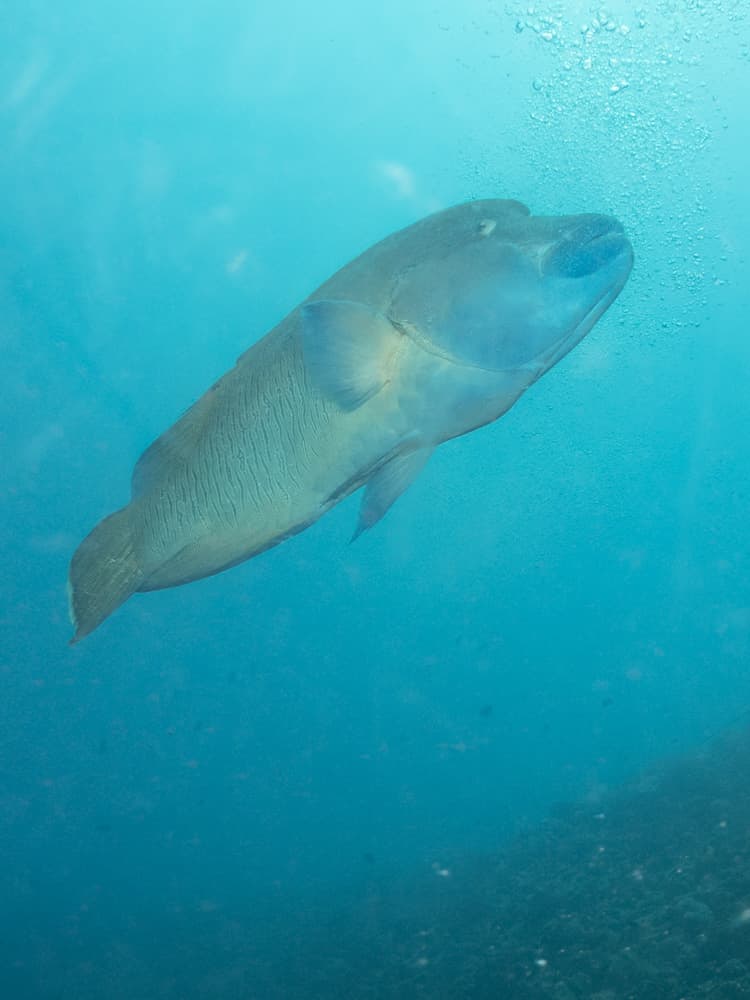
Here's the backside of the wrasse and you can see the surveyors watching the wrasse swimming by. This guy was huge about two feet long!
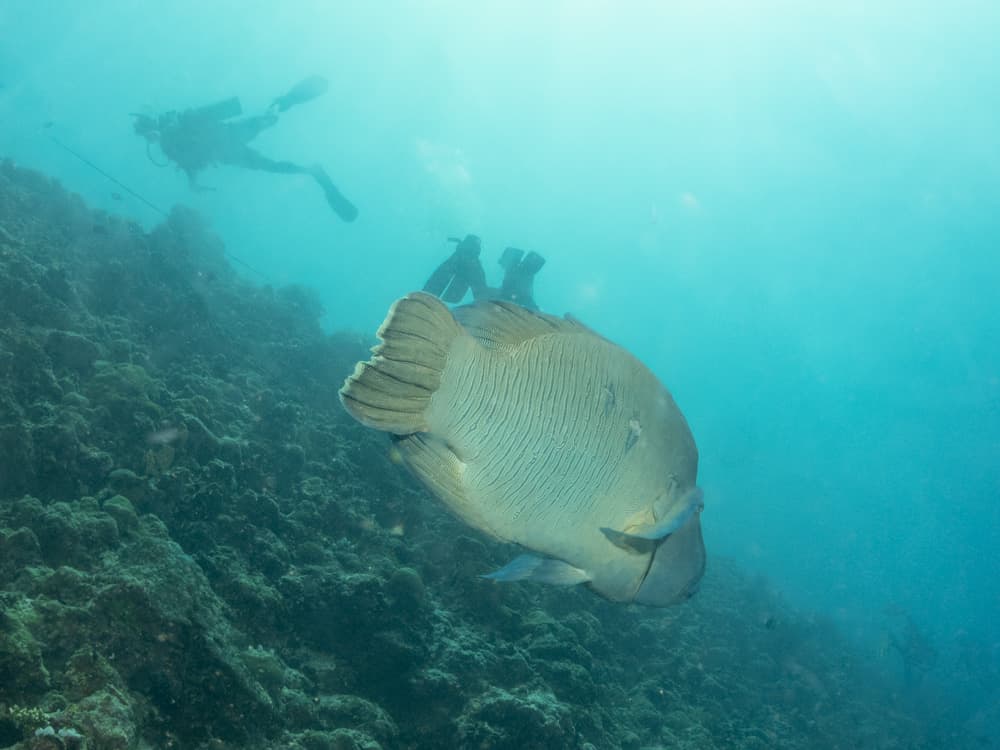
One thing that I will take back from this trip is how to identify coral health. Healthy coral typically has a mucous-like feel when you touch it. Recently-killed coral typically has a dark brown or black color to it and is usually amongst healthy coral. When touched, it doesn't have the mucous like liquid.
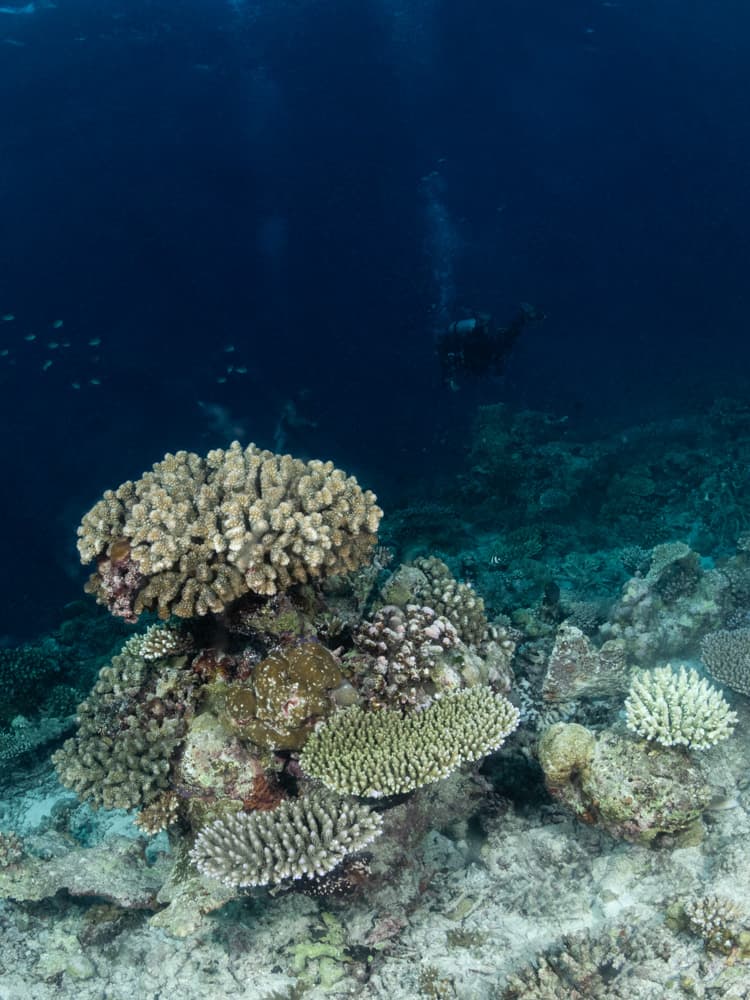
In the photo above, the very top coral is mostly healthy. However, the edges are brownish in color and when touched likely doesn't have a mucous-like substance and has lost its ridges. This is recently killed coral. About a third of the corals where in this state. I learned that there was a bleaching event in the Maldives in 2023. Based on our survey, the corals are recovering.
We surveyed a lot of fish including snapper. I learned that the fish that I usually called grunts in the Caribbean are actually snappers!
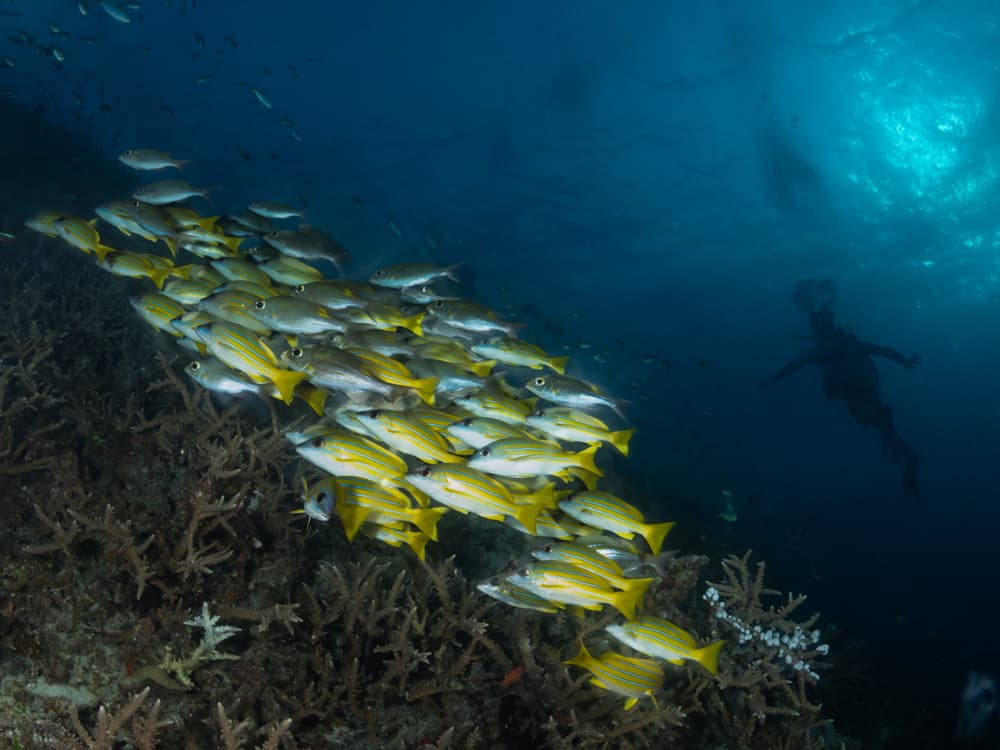
We also surveyed a variety of groupers. I learned that groupers over 30cm have been over-fished in the Maldives thus we didn't see much of them. Other fish that we looked at include butterfly fish, sweetlips, and big animals off the transect such as sharks, turtles, eagle rays, etc ...
Our team leader, Dr. Matthias Hammer (learn more about him here) wrote a diary about our trip.
Check it out below:
- 10/7/2025: Maldives Half Checked
- 10/8/2025: Maldives Mantas and Corals
- 10/10/2025: Maldives Stable Recovery
All in all, the experience was amazing and I got to meet a very diverse group of people from all over the world. I would highly recommend this to divers who would like to make a difference in marine conservation.
